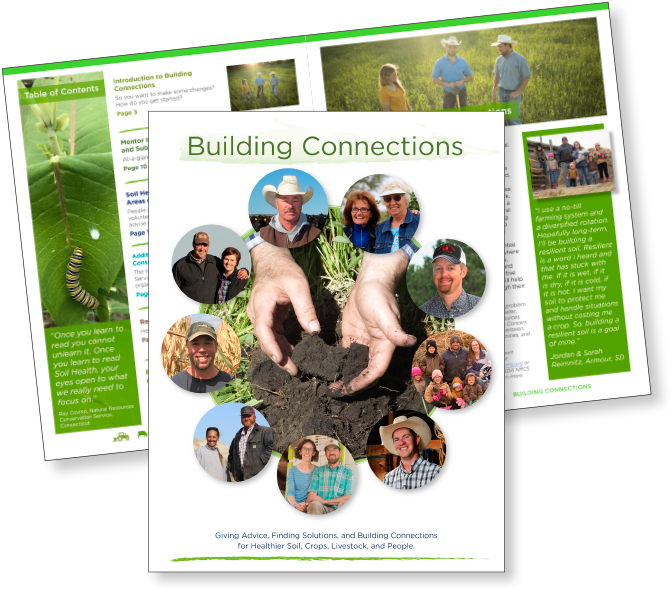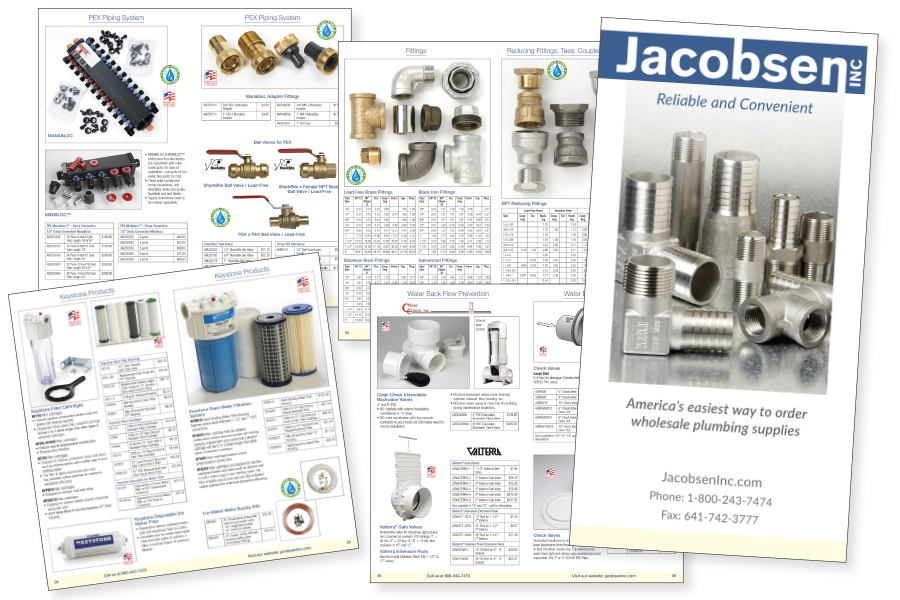I was hired by the Natural Resources Conservation Service of South Dakota (NRCS-SD) to update a design on a booklet called Building Connections. The booklet is shared with farmers across the state, giving advice, finding solutions and building connections for healthier soil, crops, livestock, and people.
From the booklet:
The South Dakota (SD) Conservation Mentor Network was organized in 2015 because people saw a need for the sharing of real on-farm/ranch experiences with application of science-based conservation practices and systems. South Dakota has a unique climate with a variety of ecosystems that include more than 800 different soil types, fluctuating precipitation, geography, and land uses. It can be challenging to successfully manage that landscape for healthy and productive natural resources with a positive bottom line.
The NRCS provides one-on-one personalized advice on best management practices to agricultural operators growing our nation’s food and fiber. The agency assists with identifying resource concerns or providing input to those that have an interest in enhancing their operation to meet a unique conservation or business goal.
Many factors can influence the long-term success of applying conservation in the landscape. With that in mind, no one knows better than the ag producers themselves of how to make things work. The SD Mentor Network is a partnership effort of several entities to help connect ag producers who could help each other save time and money by sharing their experiences. Mentor-mentee roles are a relationship where people share knowledge, advice, and resources, and provide a stable supportive relationship. Mentors will help guide producers through their specific topics.
This free service, the Building Connections Mentor Network, is available to anyone by contacting your NRCS Service Center, Conservation District (CD), the South Dakota Grassland Coalition (SDGC), or the South Dakota Soil Health Coalition (SDSHC).
About the project
The project coordination was handled entirely remotely, either via text, email or Zoom calls. As with most projects, the client didn’t really know what they liked for a design. So this was a clean slate for me! I did know that they wanted to see faces – lots of faces. I submitted several front page concepts and a few interior page concepts and the final look and feel was finalized.
But the project was far from done. What we thought we wanted for flow and content changed considerably over the months and months we worked together on the project, based on the changes of usage. And how often information, specifically mentor contact information, could realistically be updated. Before the last and final changes, the booklet was pared down from 48 pages to 40.
Some challenges for these types of projects is that it needed to be designed to print as a commercially printed booklet (in spreads) and also on non-commercial printers (single pages). Centering the page numbers on the bottom of the page removed confusion on what page would have to be a right hand page vs a left hand page. A simple solution but sometimes overlooked.
Even though the top color bars bleed off the page, something I was trying to avoid but the client wanted, some non-commercial printers won’t be able to print it. So I had to make it tall enough to still be seen at the top even if there was a little bit of white space.
The different sections are all color coded to help maneuver through the booklet. And testimonials were added which gave the booklet more of a personalized touch.
From start to finish, from August 7, 2020 to May 7, 2021, the multiple team members from the NRCS-SD were great to work with and genuinely appreciated my design and work ethic. I look forward to working with them again in the future!

